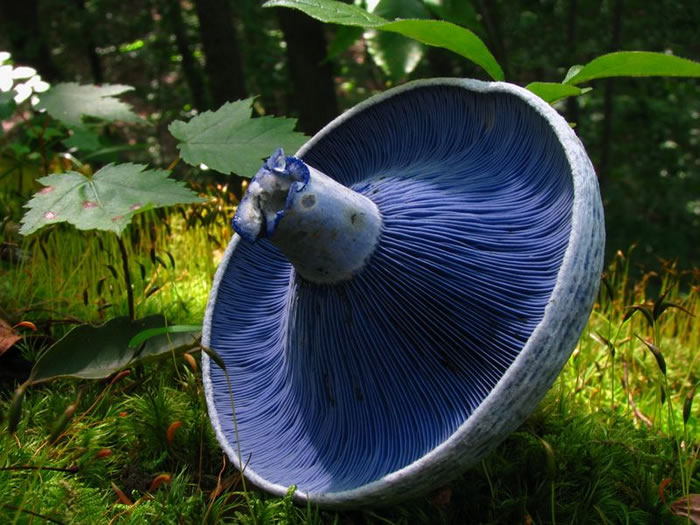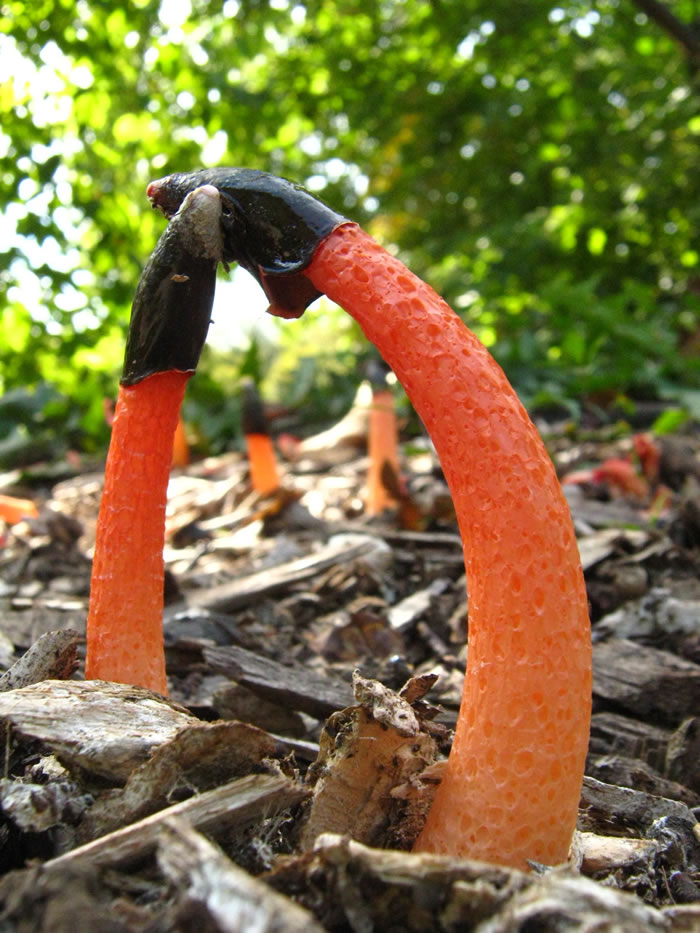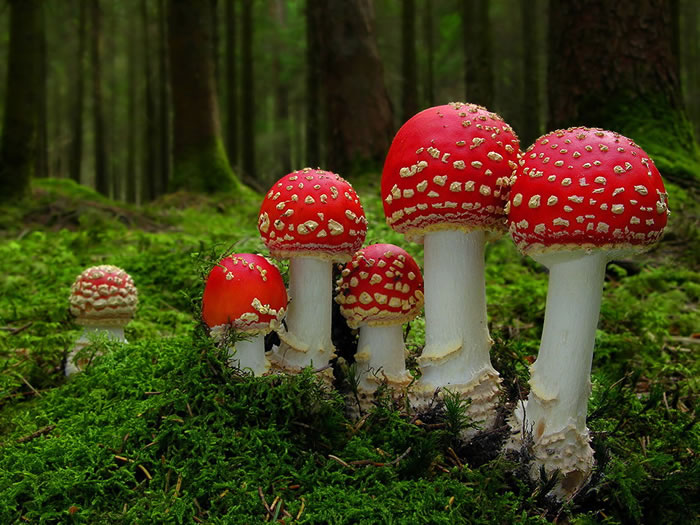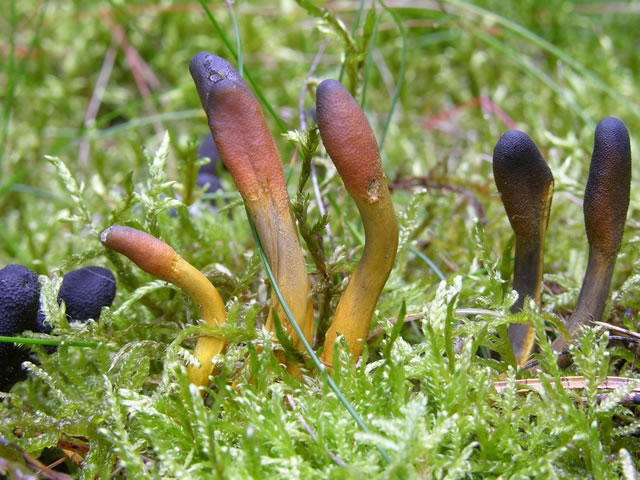Bleeding Tooth Fungus

Check out these amazing images and ask yourself are the mushroom science fiction or are they actual living fungi? The answer might surprise you!
Look through all these strange and beautiful images and then see the answer at the bottom of the page.
If you have any strange mushroom images that you think should be included let us know
Rhodotus palmatus

Lion’s Mane Mushroom

Amethyst Deceiver

Indigo Milkcap

Latticed Stinkhorn

Violet Coral

Anemone Stinkhorn

False Morel, or Brain Mushroom

Dog Stinkhorn

Glow-in-the-Dark Mushroom

Fly Agaric

Turkey Tail

Cordyceps

Giant Puffball

Devil’s Cigar

Caesar’s Mushroom

Pixie’s Parasol

Entoloma hochstetteri

Veiled Lady Mushroom

Golden Jelly Fungus

The answer is they are ALL real.
Mushroom Science Fiction Or Fact 21 Strangest Fungi
Bonus Fungus Facts
A fungus (plural: fungi or funguses) is any member of a large group of eukaryotic organisms that includes microorganisms such as yeasts and molds (British English: moulds), as well as the more familiar mushrooms. These organisms are classified as a kingdom, Fungi, which is separate from plants, animals, protists, and bacteria. One major difference is that fungal cells have cell walls that contain chitin, unlike the cell walls of plants and some protists, which contain cellulose, and unlike the cell walls of bacteria. These and other differences show that the fungi form a single group of related organisms, named the Eumycota (true fungi or Eumycetes), that share a common ancestor (is a monophyletic group). This fungal group is distinct from the structurally similar myxomycetes (slime molds) and oomycetes (water molds). The discipline of biology devoted to the study of fungi is known as mycology (from the Greek μύκης, mukēs, meaning “fungus”). Mycology has often been regarded as a branch of botany, even though it is a separate kingdom in biological taxonomy. Genetic studies have shown that fungi are more closely related to animals than to plants.
Abundant worldwide, most fungi are inconspicuous because of the small size of their structures, and their cryptic lifestyles in soil, on dead matter, and as symbionts of plants, animals, or other fungi. They may become noticeable when fruiting, either as mushrooms or as molds. Fungi perform an essential role in the decomposition of organic matter and have fundamental roles in nutrient cycling and exchange. They have long been used as a direct source of food, such as mushrooms and truffles, as a leavening agent for bread, and in fermentation of various food products, such as wine, beer, and soy sauce. Since the 1940s, fungi have been used for the production of antibiotics, and, more recently, various enzymes produced by fungi are used industrially and in detergents. Fungi are also used as biological pesticides to control weeds, plant diseases and insect pests. Many species produce bioactive compounds called mycotoxins, such as alkaloids and polyketides, that are toxic to animals including humans. The fruiting structures of a few species contain psychotropic compounds and are consumed recreationally or in traditional spiritual ceremonies. Fungi can break down manufactured materials and buildings, and become significant pathogens of humans and other animals. Losses of crops due to fungal diseases (e.g. rice blast disease) or food spoilage can have a large impact on human food supplies and local economies.
The fungus kingdom encompasses an enormous diversity of taxa with varied ecologies, life cycle strategies, and morphologies ranging from unicellular aquatic chytrids to large mushrooms. However, little is known of the true biodiversity of Kingdom Fungi, which has been estimated at 1.5 million to 5 million species, with about 5% of these having been formally classified. Ever since the pioneering 18th and 19th century taxonomical works of Carl Linnaeus, Christian Hendrik Persoon, and Elias Magnus Fries, fungi have been classified according to their morphology (e.g., characteristics such as spore color or microscopic features) or physiology. Advances in molecular genetics have opened the way for DNA analysis to be incorporated into taxonomy, which has sometimes challenged the historical groupings based on morphology and other traits. Phylogenetic studies published in the last decade have helped reshape the classification of Kingdom Fungi, which is divided into one subkingdom, seven phyla, and ten subphyla.